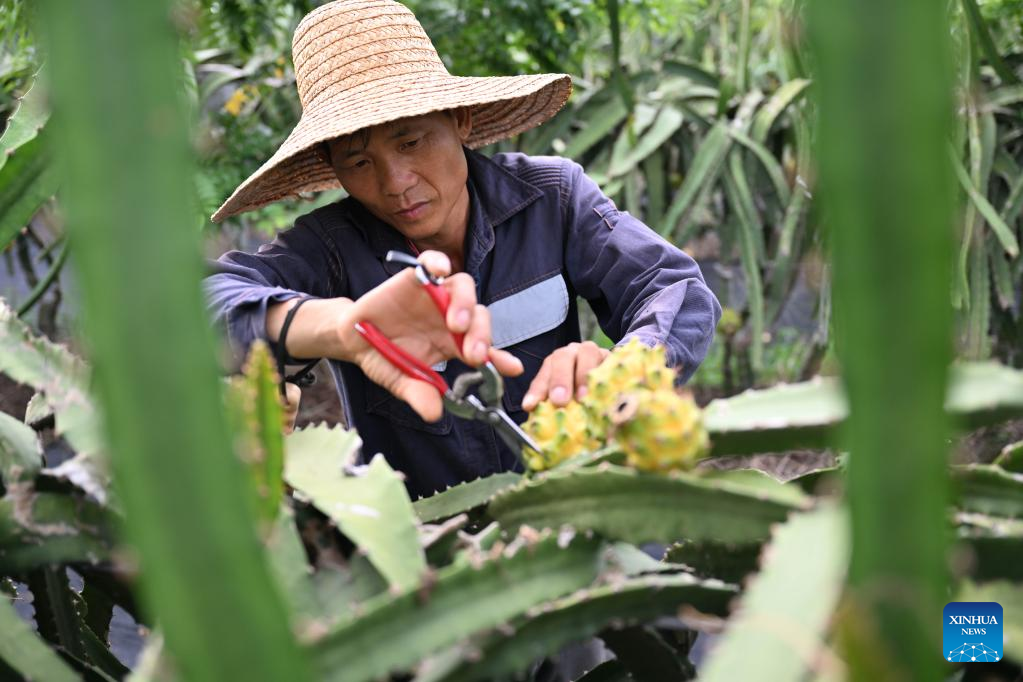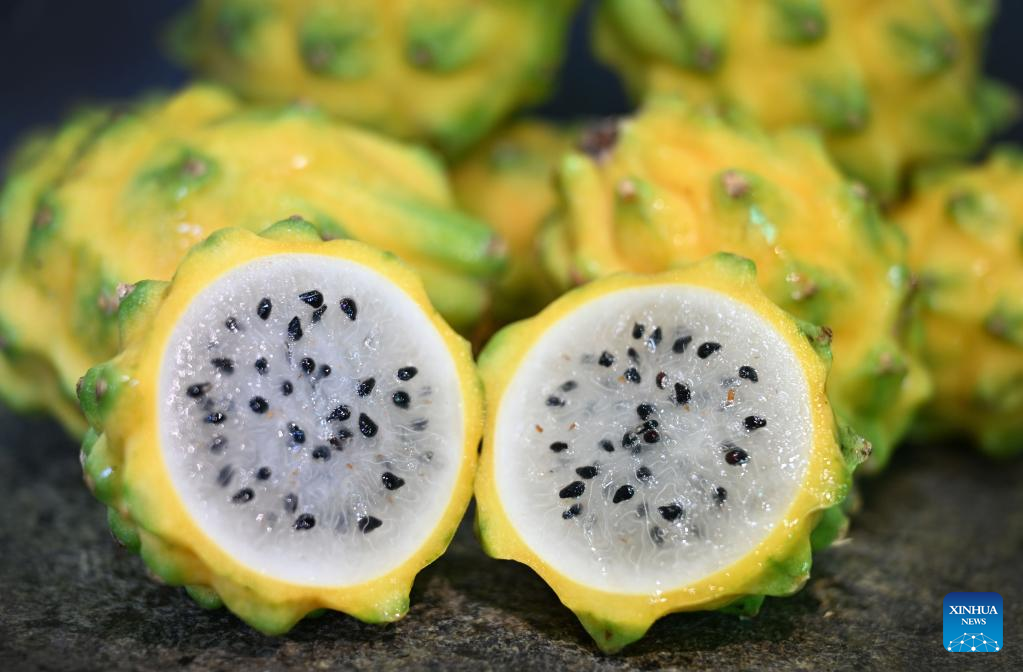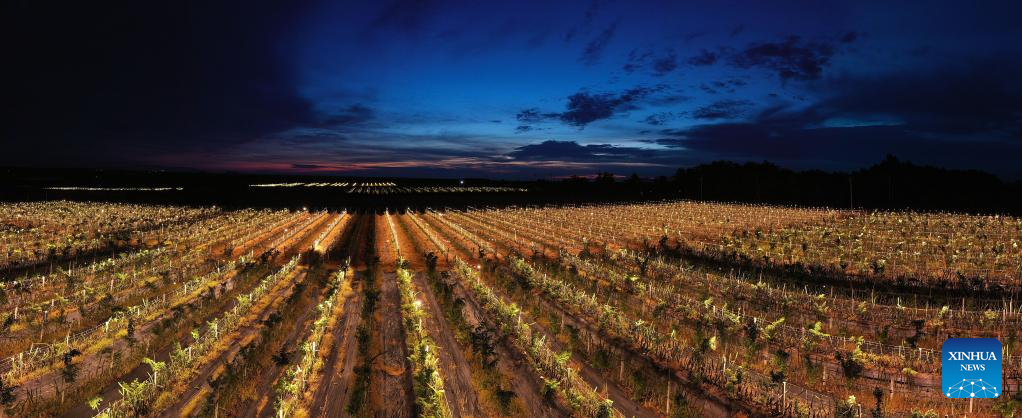
Villager Zhao Feng picks yellow pitaya at a plantation in Dongfang City, south China's Hainan Province, June 9, 2022.
Yellow pitaya, originally from South America, has taken root across the tropical island province of Hainan, some 17,000 kilometers away from their birthplace. (Xinhua/Guo Cheng)
HAIKOU, June 18 (Xinhua) -- Yellow pitaya, originally from South America, has taken root across the tropical island of south China's Hainan Province, some 17,000 km away from their birthplace.
In Le'an Village of Sanjia County, Dongfang City, local villagers are busy picking yellow pitaya on a plantation.
Starting from January this year, nearly 6 hectares of these plantations, which cover over 13 hectares, began to mature, and harvest will last until September.
Similar to dragon fruit, the yellow pitaya is sweeter with high nutrition value.
Boasting a tropical climate and long-term sunlight, Hainan is quite suitable for planting yellow pitaya, said Chen Chengjin, director of Dongfang Guobo Yellow Pitaya Plantation.
In 2019, yellow pitaya was rarely planted in Hainan and the price was very high. Seeing the business opportunity, Chen's plantation started to plant this golden fruit.
Since yellow pitaya is a new variety, demanding a high level of planting skills, the plantation only harvested about 750 kg of yellow pitaya in 2020. One year later, the yield doubled thanks to improved planting skills and management.
Chen said yellow pitaya's growth cycle takes around 14 months from planting to harvest. The yield is relatively low, but the labor cost is high, leading to a high price.
"In summer, there are many fruits in the market and the price of big yellow pitaya purchased at the plantation is between 80 yuan (about 11.9 U.S. dollars) and 100 yuan per kg," said Chen, adding that in winter the price could reach 100 yuan to 120 yuan per kg.
The estimated output of the plantation is between 125,000 kg and 150,000 kg and the total revenue is expected to surpass 10 million yuan, Chen said. The fruit is mainly sold to big cities like Beijing, Shanghai, Hangzhou and Guangzhou, and is currently in short supply.
With good economic benefits, yellow pitaya has also benefitted local villagers. More than 20 villagers worked on the plantation to help manage the fruit trees.
Zhao Feng, 46, a farmer from Suanmei village, came to manage 1.8 hectares of the plantation in April last year and took care of the fruit trees with his wife.
Previously working on a dragon fruit plantation, Zhao said it was more difficult to grow yellow pitaya and more complicated to pick the fruit, and he earned more than from his last job.
"I can earn 6,000 to 7,000 yuan each month. We are very satisfied," Zhao said. ■

Photo taken on June 12, 2022 shows yellow pitaya in Haikou, south China's Hainan Province.
Yellow pitaya, originally from South America, has taken root across the tropical island province of Hainan, some 17,000 kilometers away from their birthplace. (Xinhua/Guo Cheng)

Aerial photo taken on June 9, 2022 shows a yellow pitaya plantation in Dongfang City, south China's Hainan Province.
Yellow pitaya, originally from South America, has taken root across the tropical island province of Hainan, some 17,000 kilometers away from their birthplace. (Xinhua/Guo Cheng)

Aerial photo taken on June 9, 2022 shows a yellow pitaya plantation in Dongfang City, south China's Hainan Province.
Yellow pitaya, originally from South America, has taken root across the tropical island province of Hainan, some 17,000 kilometers away from their birthplace. (Xinhua/Guo Cheng)



